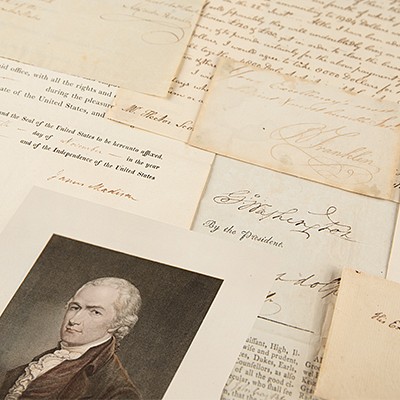Pablo Picasso Autograph Note Signed, Authorizing the Reproduction of 'Les Saltimbanques'
Two ways to bid:
- Leave a max absentee bid and the platform will bid on your behalf up to your maximum bid during the live auction.
- Bid live during the auction and your bids will be submitted real-time to the auctioneer.
Bid Increments
| Price | Bid Increment |
|---|---|
| $0 | $5 |
| $50 | $10 |
| $200 | $25 |
| $500 | $50 |
About Auction
Oct 11, 2023
RR Auction support@rrauction.com
- Lot Description
Brief ANS from Pablo Picasso, “Oui, Picasso, 2. Mai 1968,” written in red crayon at the bottom of a typed French-language letter addressed to the artist by Joseph Groben, a professor in Luxembourg, one page, 8.25 x 11.75, April 29, 1968. Additionally, Picasso has underlined a section of the letter, which reads (translated): “grant us permission to reproduce this work in our school book.” The full text of the letter: “Most revered master, During the new edition of the Luxembourg reading book ‘Der Brunnen,’ intended for the class of VII, we would very much like to reproduce as an illustration in the text your etching 'Les saltimbanques' (1905) in order to make known to our Luxembourg youth a work by the most prodigious artist of the 20th century. We are convinced that your engraving, thanks to its freshness and its poetry, would give enormous pleasure to our young pupils and that it would have a happy influence on the formation of their taste. This is why we are addressing you, dear teacher, to ask you to kindly grant us permission to reproduce this work in our school book. We would be happy to send you our 'Brunnen' as soon as it is published. Please accept the expression of our deep respect and our sincere gratitude.” In fine condition.
One of Picasso’s most important paintings from his early career is ‘Les Saltimbanques,’ the culmination of his Saltimbanque cycle, a series of drawings, paintings, engravings, and sculptures that Picasso focused on from late 1904 to the end of 1905. Their focus was on circus performers, such as acrobats, clowns, and harlequins, subjects typically portrayed in a certain jovial or playful manner. Picasso’s representations, however, were quite the opposite. To Picasso, these wandering saltimbanques stood for the melancholy of the neglected underclass of artistes, a kind of extended family with whom he identified. Like them, the Spanish-born Picasso was transient during his first years in Paris while striving for recognition. Eventually he found a dilapidated apartment in Montmartre, where he and his friends regularly attended the local Cirque Medrano’s performances. Picasso made many images of circus performers in 1904-1905, most of them representing couples with their babies and troupe animals, posed ‘portrait’ images, and figures at practice.’ Family of Saltimbanques is considered the masterpiece of Picasso's Rose Period, sometimes called his ‘circus period.’ - Shipping Info
-
Bidder is liable for shipping and handling and providing accurate information as to shipping or delivery locations and arranging for such. RR Auction is unable to combine purchases from other auctions or affiliates into one package for shipping purposes. Lots won will be shipped in a commercially reasonable time after payment in good funds for the merchandise and the shipping fees are received or credit extended, except when third-party shipment occurs. Bidder agrees that service and handling charges related to shipping items which are not pre-paid may be charged to a credit card on file with RR Auction. Successful international Bidders shall provide written shipping instructions, including specified Customs declarations, to RR Auction for any lots to be delivered outside of the United States. NOTE: Declaration value shall be the item’(s) hammer price and RR Auction shall use the correct harmonized code for the lot. Domestic Bidders on lots designated for third-party shipment must designate the common carrier, accept risk of loss, and prepay shipping costs.
-
- Buyer's Premium



 EUR
EUR CAD
CAD AUD
AUD GBP
GBP MXN
MXN HKD
HKD CNY
CNY MYR
MYR SEK
SEK SGD
SGD CHF
CHF THB
THB











